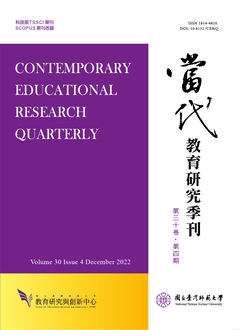

本研究旨在探討臺灣與芬蘭國小數學教科書,在幾何教材內容呈現的異同。研究對象為臺灣康軒版和芬蘭WSOY版教科書,採用內容分析的方法,以課程目標和數學問題為分析單位,依研究者設計的分析類目,來分析兩國幾何教材目標和內容呈現的特色。研究結果顯示,在幾何教材目標上,兩國皆強調透過操作來理解幾何形體的性質,在幾何教材內容上,兩國教科書中的幾何問題都以幾何形體的辨識與建製最多。無論是在教材目標和內容上,兩國空間幾何的內容所佔比例都偏低。此外,本研究也發現臺灣幾何問題多使用圖形和文字來呈現,並意圖經由解題結果來歸納和發現幾何形體的特色或定義,而芬蘭幾何問題的呈現則以圖形為主。兩國教材中幾何概念呈現的順序和結構大致符合van Hiele幾何思考和發展的理論。
This study compared the geometry content of instructional materials used at the elementary school level in Taiwan and Finland. The instructional materials reviewed were the Kang Hsuan textbooks used in Taiwan and the WSOY textbooks used in Finland. The methodology employed was content analysis with curriculum objectives and mathematics problems as the analytic units. The analytic categories used in the data analysis were researcher designed and were subsequently used to comparatively analyze the curriculum objectives and the characteristics of the geometry instructional materials in the textbooks. The findings showed that understanding the features of geometric shapes through operations was emphasized in the curriculum objectives of both countries’ textbooks. With regard to the mathematical content of the instructional materials, most of the problems in both textbooks were classified as “identification and establishment of geometric shapes,” with many fewer objectives and problems classified as “spatial geometry.” Data also showed that Taiwan’s textbooks used pictures along with text to present geometric problems, and intended students to conclude and discover the features and definitions of geometric shapes through problem solving, while Finland’s textbooks mainly used pictures to present problems. The sequence and structure of geometric concepts in the textbooks of both countries were very consistent with the theoretical principles set forth by van Hiele on geometric thinking and development.

本著作係採用創用 CC 姓名標示-非商業性 3.0 台灣 授權條款授權.
本刊國立台灣師範大學教育研究與創新中心
106台北市和平東路一段162號 | 電話: 02-7749-3670 | E-mail: cerecerq@gmail.com
教創中心 | 師大 | 電子報 | 線上投審系統
本刊由國家科學及技術委員會人文社會科學研究中心補助經費
© 2014 CERI-NTNU
